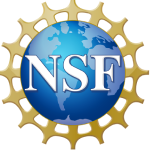Monthly Tutorial: Cesar de la Fuente
Monday, July 14, 2025 •
Speaker: Cesar de la Fuente, Presidential Associate Professor, Psychiatry, Penn
Topic: AI for Antibiotic Discovery
Location: Amy Gutmann Hall, Room 414 (Penn), and via Zoom (email Annie for link)
Lunch will be provided for in-person attendees at Penn (please bring your own drinks)!
Abstract:
Traditional antibiotic discovery has long relied on physically exploring nature, collecting soil and water samples to isolate active compounds through a painstaking trial-and-error process. This approach has become increasingly unsustainable in the face of rising antibiotic resistance and the urgent need for new therapeutics. In this talk, I will discuss how our lab has moved beyond this paradigm over the past decade by leveraging artificial intelligence (AI) to digitally mine the world’s biological information—genomes, proteomes, and metagenomes.
Although computers excel at superhuman pattern recognition in images and text, their application in biology and medicine is still emerging. We have pioneered the design of antibiotics using AI, demonstrating proven efficacy in preclinical animal models and showing that machines can effectively create therapeutic molecules. For the first time, we mined the human proteome to identify antibiotic candidates and subsequently hypothesized that similar compounds could be found throughout evolution. By expanding our efforts to ancient biology, our AI-driven approach led to the discovery of therapeutic molecules from organisms such as Neanderthals and the woolly mammoth, a milestone that launched the field of molecular de-extinction and yielded preclinical candidates such as neanderthalin, mammuthusin, and elephasin.
Furthermore, our lab has broadened antibiotic discovery initiatives to explore other branches of the tree of life. By computationally analyzing microbial “dark matter”, we identified nearly one million new antibiotic molecules, all of which have been made freely available and open access to encourage worldwide collaboration. Through machine learning, this collaborative effort explored the vast diversity of the microbial world by analyzing 63,410 metagenomes and 87,920 microbial genomes. Additionally, by examining thousands of human microbiomes, we and our collaborators discovered a myriad of new antimicrobial agents, including prevotellin-2 from the gut microbe Prevotella copri. Most recently, we have also digitally mined Archaea, an underexplored domain of life, identifying a new class of antibiotics called archaeasins.
Finally, I will provide an overview of our latest AI models APEX, APEXGO, and APEXDUO, which respectively enable sequence-to-function prediction, computer-based antibiotic optimization, and the generation of multimodal therapeutics. Collectively, our efforts have dramatically accelerated antibiotic discovery, reducing the time required to identify preclinical candidates from years to just a few hours. I believe we are on the cusp of a new era in science where advances enabled by AI will help control antibiotic resistance, infectious disease outbreaks, and future pandemics.

